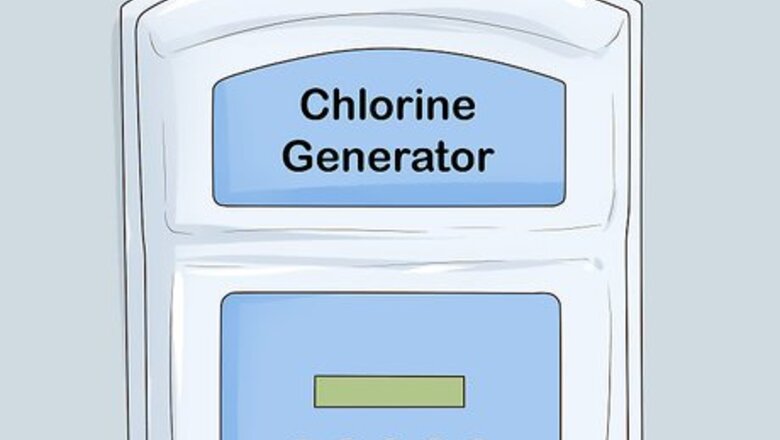
views
Reducing the Chlorine Level

Lower the output from the chlorine generator or feeder if you have one. Many saltwater pools have a chlorine generator, feeder, or chlorinator that releases free chlorine into the water. Locate the control panel box and turn down the dial 1 level. Retest your water the following day and further adjust the dial or turn off the machine, if necessary. If you turn off the machine, be sure to test the water 2-3 times per day, and turn the machine back on when the chlorine drops below 3.0 ppm.
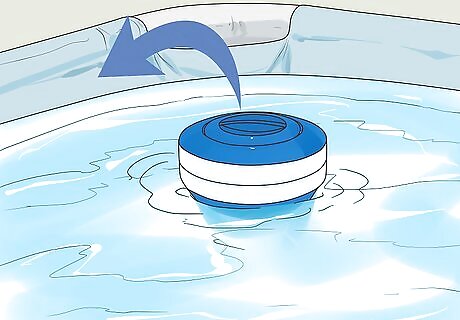
Remove all chlorine additives from the pool, if applicable. You may have chlorine tablets or a chlorine floater in the pool. If so, remove these items immediately so they stop increasing the amount of chlorine in the water. Don’t replace these items until the chlorine level has dropped below 3.0 ppm.
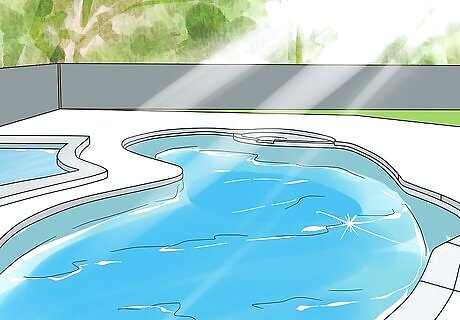
Allow sunlight to break down the chlorine if the weather permits. Sunlight is incredibly effective at reducing the amount of chlorine in a pool! The UV rays break down the chlorine and allow it to evaporate. Simply leave your pool uncovered and exposed to direct sunlight. With no cyanuric acid (CYA) in the pool up to 90% of the chlorine can evaporate in as little as 2 hours on a hot, sunny day, so be sure the level doesn’t drop below 1.0 ppm.

Add a chlorine-neutralizing chemical to the pool for a quick fix. Purchase a chemical that neutralizes chlorine, like sodium sulfite or sodium thiosulfate. Follow the instructions on the package for use. Typically, you’ll add a dose to the skimmers with the filter running, and the chemicals will quickly lower the amount of chlorine in the water. You should be able to find these chemicals at pool supply stores and online.
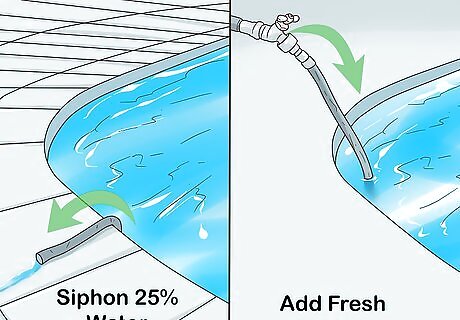
Replace 25% of the saltwater with freshwater if the levels are very high. If the chlorine levels are really high, you can simply swap out some of the existing water for freshwater. Siphon 25% of the water out of the pool, then add freshwater to it. To siphon out the water: Submerge a tube in the pool and allow it to completely fill up with water. Plug 1 end of the tube and transfer it to an empty container at a lower elevation than the pool. Unplug the end of the tube and allow it to drain into the container. Pull the tube out of the pool when you’ve siphoned enough water.
Testing the Chlorine Level
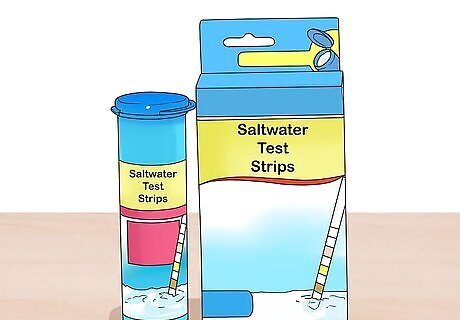
Obtain saltwater test strips or a testing kit. Saltwater test strips are easy to use and are a cheaper alternative to a testing kit. However, a testing kit may give you a more accurate reading of the chlorine levels of the pool. Be sure to choose a kit or strips formulated for use in saltwater pools. You can find saltwater test strips and kits from pool supply stores as well as online.

Test the free chlorine levels in the pool weekly. Dunk the saltwater test strips into the water, then compare the color the paper turns with the provided chart to find out how much chlorine is in the water. Alternatively, fill up a test kit with water from the pool. Add the specified number of the appropriate droplets to the chlorine chamber and compare the color of the water to the provided chart to find out the chlorine level. Make sure you’re testing free chlorine, not total chlorine, as the free chlorine is what is available to kill germs and bacteria in the water. Follow the specific directions including with your test strips or kit.
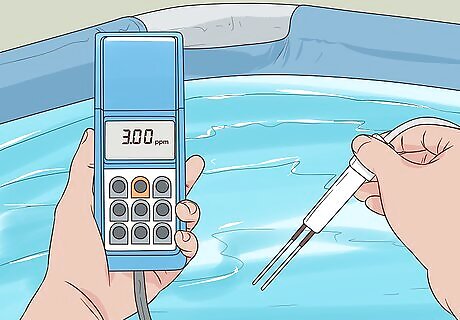
Aim for a free chlorine reading of 1.0 to 3.0 ppm. Saltwater pools require “free” chlorine to kill harmful bacteria that could make swimmers sick. On average, your saltwater pool should have a free chlorine reading of 1.0 to 3.0 ppm. If the level drops below 1.0 ppm, the water is not safe to swim in until chlorine is added.
















Comments
0 comment